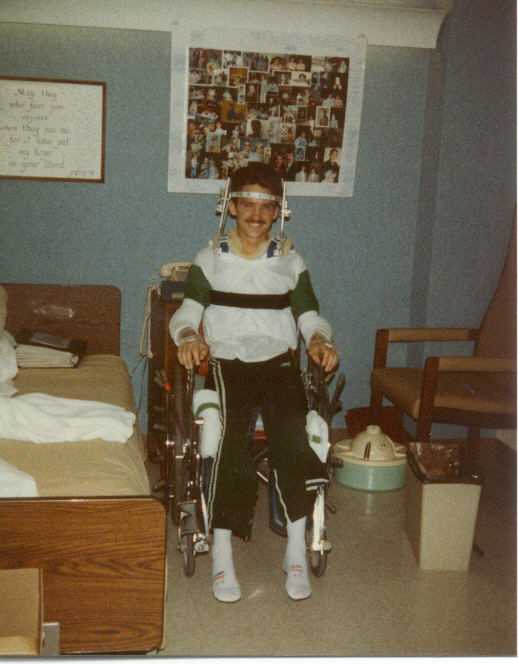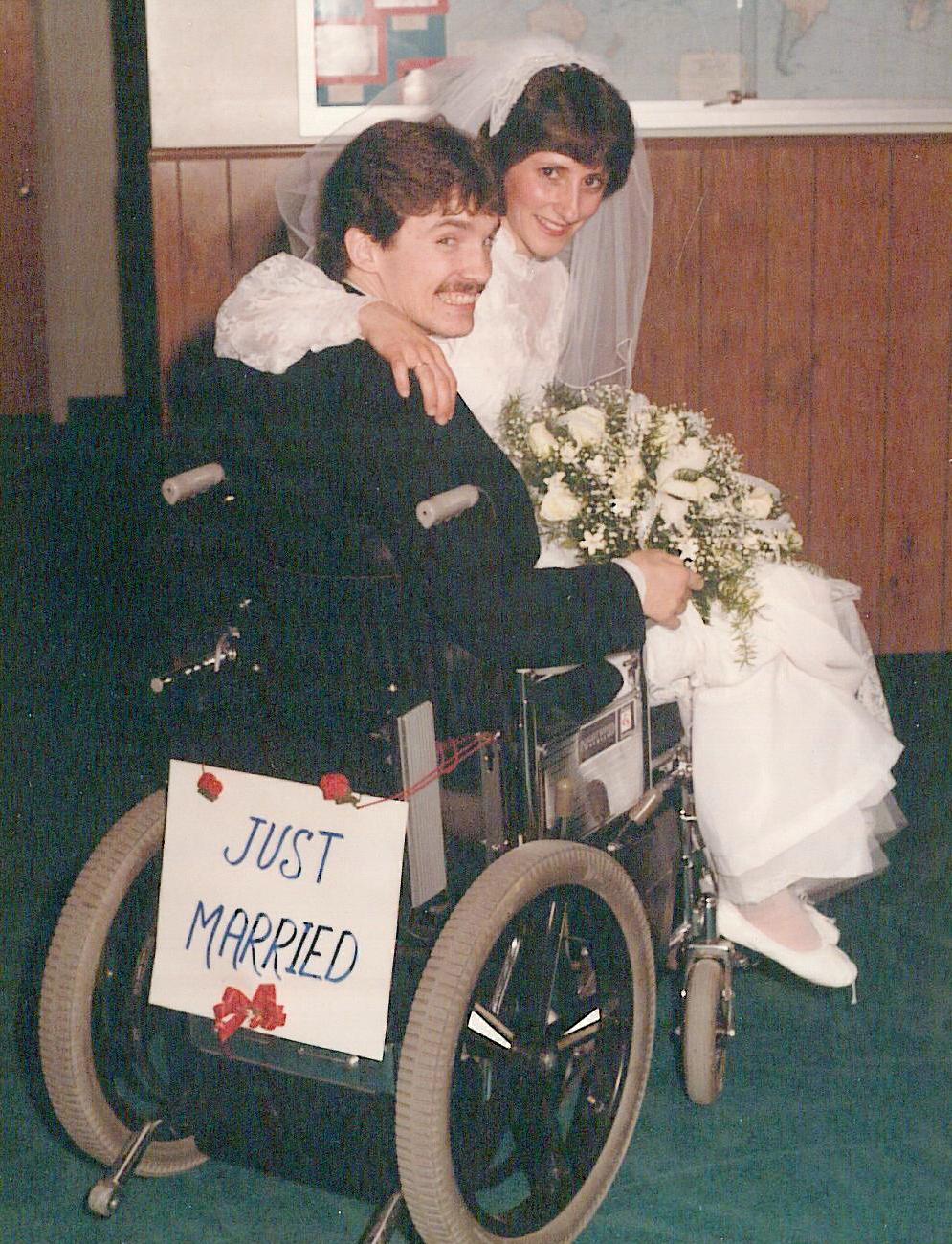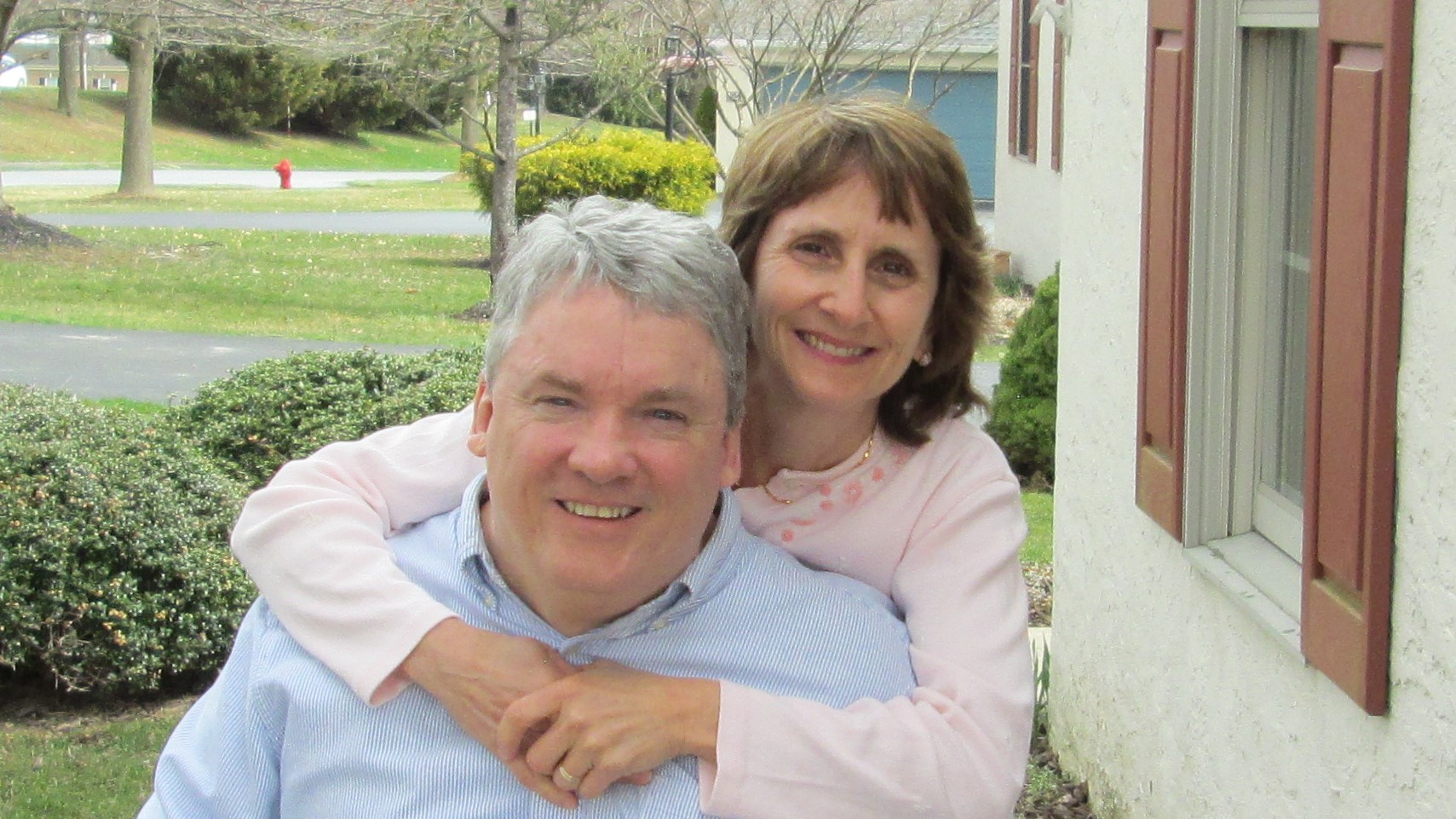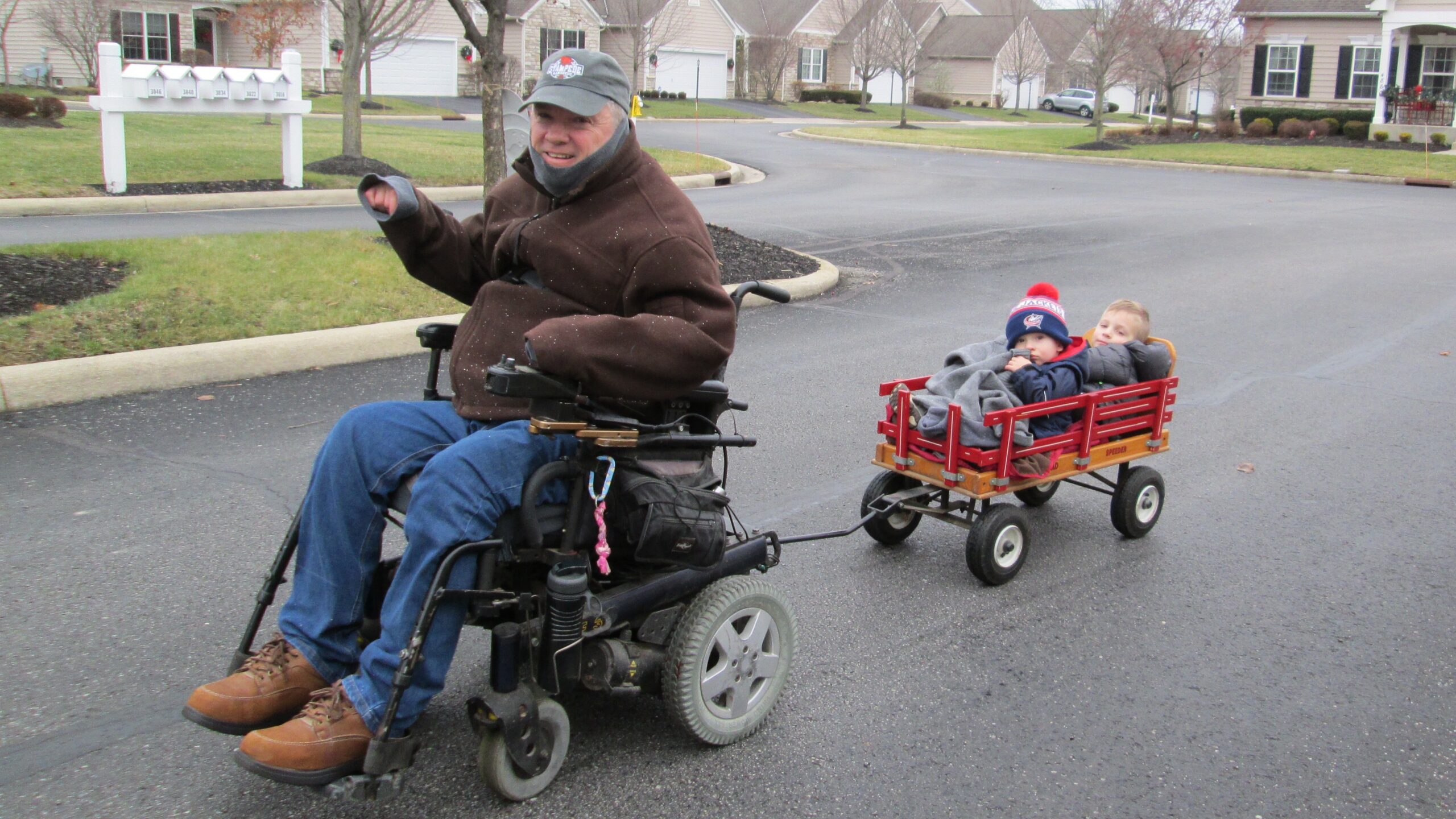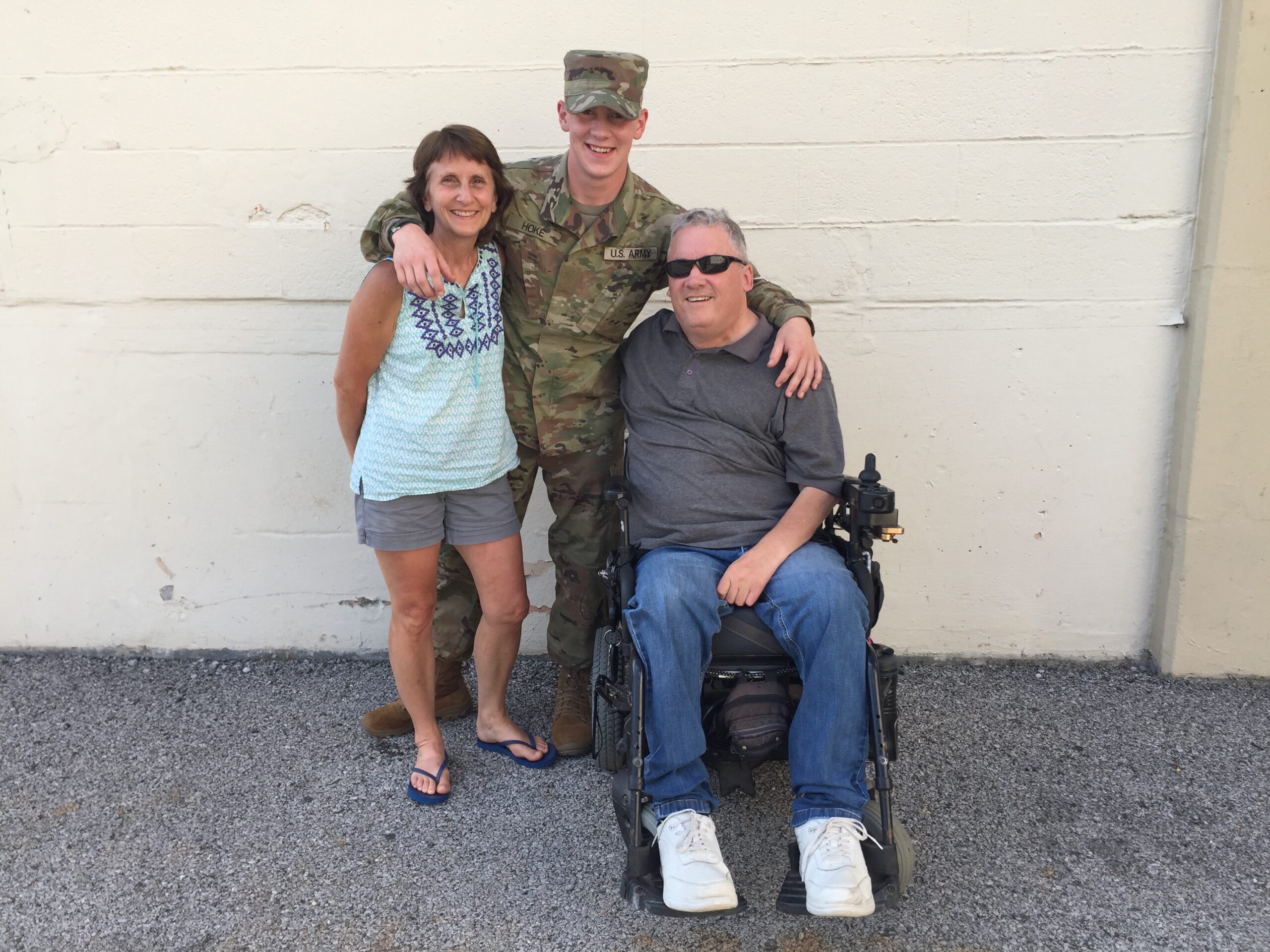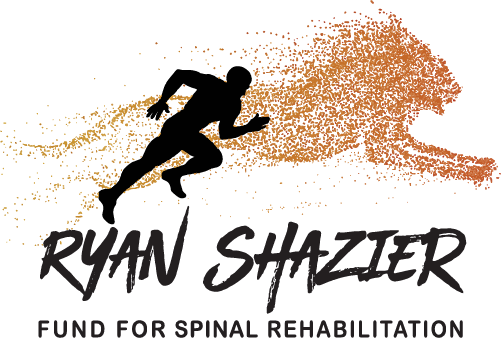Falling in love with an able-bodied, fun young man doesn’t change the hearts of these two when an unthinkable SCI occurs.
Carol Stoltzfus and Curtis Hoke met at Cedarville University when they were 21 and 20, respectively. The couple met reasonably young, and Carol explains, “We both loved to do fun things together, and we had some mutual friends. We dated for about 18 months.”
It was shortly after their courtship when Curt proposed.
Join the Family!
After Curt graduated, he was offered a position with Stoltzfus Enterprises LTD Builders, Carol’s family building enterprises, which her father started Stoltzfus, and Curtis fit in with the capable hands of Carol’s brothers, Merle Stoltzfus and David Stoltzfus. He put his talent in math and I.T. skills to use and helped the business transition to the cybernetic age. (Carol is one of seven children; her sister Esther Prosser works as a Realtor in the area, much of her service centers around Stoltzfus Enterprises).
“So, I started working for Stoltzfus Enterprises,” Curt says, “and was here for about two months. And one Sunday afternoon, I had a diving accident. I dove on top of someone.”
A Complete Injury
And in that short, happy moment, young Curtis Hoke became a C5-6 complete spinal cord warrior.
Curtis was in the small, rural town of Elverson, PA at the time of his accident, so he was rushed to Jefferson Ross-Magee Rehabilitation Hospital in Philadelphia.
Hoke spent six months at Magee. “Carol and I were engaged to be married,” remarked Hoke. “So, we put our engagement on hold.” Hoke went back to live with his parents in Western PA.
“And then Carol came out with her parents to visit me,” smiles Hoke. And Carol said yes—a second time.
Love of the Man
“Curt was the same fun-loving and witty guy I had loved for so long,” reminisces Carol. “My love and attraction eclipsed the challenge of dealing with (his) disability.”
So, the wedding planned for the Spring of ’83 became the wedding event of the Spring of ’85.
When the Hokes were asked if they were envious of all of the technical advances that have been made in the 40 years since Curt received his C5/6 complete diagnosis, Hoke answered with a resounding “No!”
Hoke was 21 when he was injured; he is now 62.
Legacy Care
“I think I got better care 40 years ago than quads are getting nowadays,” Curt answered curtly.
Curt occasionally meets newly diagnosed quads, and he observes repeatedly that these men and women are getting “kicked out at six weeks.”
Remember, Hoke was at Magee for six months. “When I was there, they taught me everything I needed to know.” Hoke references bowel management, bladder management, sores from being in one place too long, and a host of other quad management skills that take time to discover and learn.
“I wear a binder, I wear TEDs,” says Hoke. “Guys coming out of rehab don’t know any of that stuff,” he exclaims. “He didn’t even know about Roho Cushions!”
Training The Man
“Oh, yeah,” Hoke adds, “I had OVR (Office of Vocational Rehab) with me the whole time.” He went to a school through the University of Pennsylvania called the Physically Handicapped Training Center. The Weingarten Center has since replaced it.
“I just met a guy recently who didn’t even know about OVR after he left rehab!”
As Curt’s fiancée, Carol also received extensive training from Magee.
Caring for the Caregiver
“Magee Rehabilitation Hospital provided training on many things for caregivers of quadriplegics.,” Carol chimes in. “This was my basis, and experience took over during our years together,” she admits.
Carol said, “I’ve found that hard work is that people discharged in six weeks are not emotionally ready, much less not having the information.”
Curtis says it’s a shame to see that, after six weeks, the funding dries up and many go back to a less-than-ideal living situation with maybe a hospital bed in the living room and a flimsy, temporary ramp up to the front door.
“And their families aren’t ready either,” says Carol.
Returning Home
Eventually, Curtis was offered his old job back with Stoltzfus Enterprises. After Magee he spent two years working for United Engineers in Philly, while Carol taught across the bridge in New Jersey at King’s Christian School.
Now, the couple works close to home. Carol runs a one-room schoolhouse from their finished daylight basement, and Curtis can often be seen commuting the few blocks to Stoltzfus Enterprises on Main St. in Elverson.
“I was also involved in helping set up the Elverson Water Company project,” says Hoke, and he remembered a couple of local committees we served together.
Author’s Note – When I was told I’d be in a wheelchair with a joystick before my surgery, I thought of Curtis Hoke. I told him I would model myself after him, wave, and smile to everyone I met. He is that much of an inspiration.
Family Plans
As a young couple, one thing the Hokes desired was a family.
“Another neat thing is, when we got hurt, we were told that quads don’t have children,” says Curtis. “They usually adopt,” he admits. “Then we got a letter from relatives in Oklahoma, saying that they learned of a new procedure to help quads to have children biologically.”
The procedure was being done in Texas.
The Hokes called Magee, and Jefferson’s urologist was doing this program – he was looking for candidates!
“So, Carol and I went down,” said Curt, “and it was successful!” The Hoke’s daughter was born in 1989.
“She’s in the Journal of Physical Medicine and something as the first child of a C5 quad ever recorded.” Their daughter is 34 now.
Hoke: Party of Five!
The Hokes went through the procedures again but with no results. Instead, they turned to Bethany Christian Services for adoption options.
“They were upfront with us and said, ‘We never worked with a quadriplegic before. We are still determining how this is going to go.’”
“Four years later, we adopted our second child, and four years later, we adopted a third!” So, the Hokes are an active family of five: two girls and a boy, ages 34, 26, and 22.
Still, Mountains to Climb
Curtis Hoke says the biggest hurdle has been “getting older.”
“Of course, everybody chases that,” chimes in Carol. “This long that you have figured out all the problems that can happen, but stuff always creeps up,” she says.” “We say, wow, we’ve never done this before!” she chuckles.
An example Curtis gives is that right before COVID, he got a kidney stone. “For a quad, that was kind of interesting,” he says. “I didn’t have any acute pain, but I knew something was wrong. And I waited to avoid going to the emergency room as much as possible.”
The doctor at the urgent care diagnosed a kidney stone, “but I was convinced it wasn’t. I thought it was a bad UTI or something.”
But Hoke took the doctor’s advice, and they found an 11-millimeter kidney stone.
He asked the urologist, “If I was a walking man, would I have been in horrible acute pain? And she said ‘you would have been screaming with pain.’”
“That helped me alert myself that when I’m feeling weird, not necessarily acute pain, but feeling bad, I need to be cautious that this could be more serious than I think it is.” In more than 40 years, this was Hoke’s first experience with Autonomic Dysreflexia.
That is a testament to how well Carol tends to the caregiving aspect of their very close marriage.
Giving Back
The Hokes belong to a large, non-denominational local church, Brick Lane Community Church, where many of their friendships and support emanate and Curtis serves as an elder for the church, and Carol can be found volunteering in many activities.
More than a dozen years ago, Carol and her friends noticed an inordinate number of women caretakers in its flock. She and a few friends started “Queen for A Day,” where these hardworking women get a day of pampering and refreshed.
Curtis says the men, who don’t relish being treated like a queen, often attend an Iron Pigs baseball game together to get away and have fellowship. “I’ll go to that too!” Hoke says. “Who doesn’t love a good ballgame with good friends?
Yet even after 40 years, “It still seems like we are being challenged with new scenarios, but we have a friend base to call for advice as needed,” says Carol. “And God always gives us grace to face whatever He gives us.”
One of the other ways Curt and Carol give back is by leading the middle school group at a camp for disabled children and their families called Family Retreat, run by Joni and Friends.
The middle school group –called “KAOS”-spends their days at camp playing games, doing crafts, learning Bible stories, or other nature activities. They have a wheelchair-accessible pool and a wheelchair-accessible wagon ride we well accessible dorms and buildings, and a mini golf course.

Shalieve
Wisdom
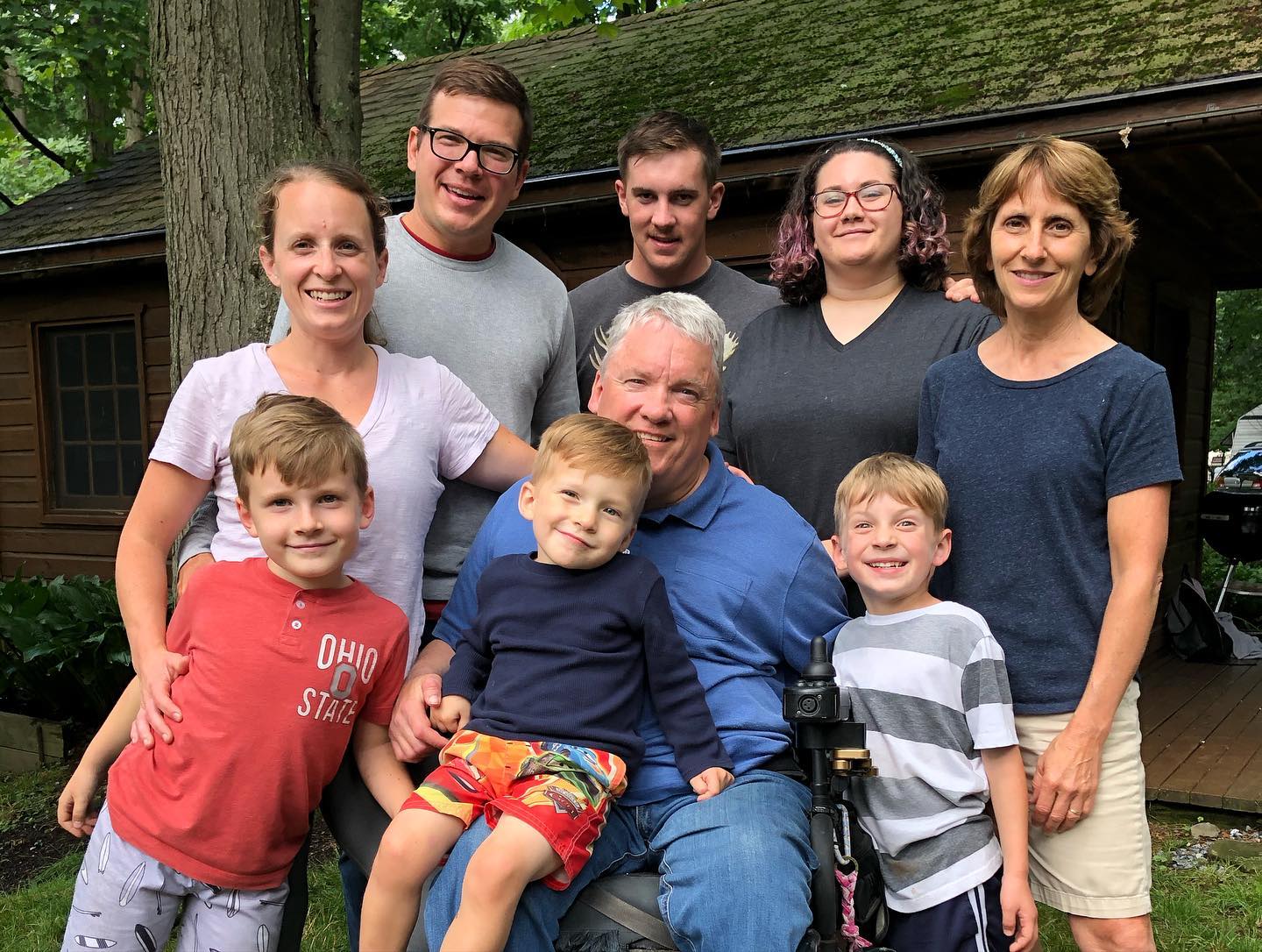
Curtis: It’s helpful if I, as the disabled spouse, do not treat my caregiving spouse as simply a nurse. I try to manage my care and medications as much as possible and only rely on my spouse for things I cannot do myself. I even try to go beyond that to do things I can to lighten her load, such as arranging for dog care and taking care of vacation planning.
Carol: Focus on the good. When life is discouraging, it is often helpful to consciously count our blessings by speaking them to each other. One way we do this is to take turns saying something we are thankful for and go back and forth until we focus on what is good rather than what brings us down.
Curtis: Focus on Faith. I hear the words of the Lord in John 3:16, “Whosoever believes in Him shall have eternal life.” I choose to believe those words, and it gives me hope that someday this wheelchair will be in the past, and I will be given a new body in heaven.

